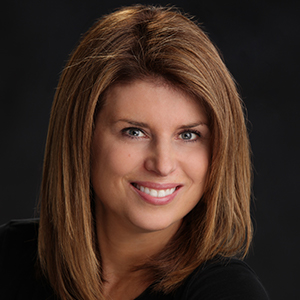Donor cultivation is an important part of the fundraising cycle because, if it’s effective, it will increase fundraising revenues for your organization. During the cultivation process, the fundraiser builds relationships with target prospects and donors to engage them with the organization. The cultivation process is in preparation to make the ‘ask’ for a gift that is both meaningful to the donor and impactful for the nonprofit.
The Four Phases of Donor Cultivation
Also commonly referred to as the ‘4Rs’. Development directors divide their time among the phases in approximately this way:
- Research: 25%
- Romance: 60%
- Request: 5%
- Recognition: 10%
Let’s dive a little deeper into each of these phases of cultivation to understand why they are essential to acquiring and retaining donors.
Research
During the prospect research and identification phase, you identify those donors and prospects most likely to make a gift. Start by defining your target prospect. Is it a first-time donor, recurring donor, major gift prospect, or Board member? What type and size gift are you seeking – annual gift, campaign contribution, planned gift?
Next, you should review past donor and volunteer lists to prioritize those individuals you will solicit. Then, add to that list from your knowledge of philanthropic opportunities in your community (e.g., donor-advised funds, family foundations, and trusts). Wealth search engines provide extensive data analytics, including qualifying prospects for major gifts. Once you have identified your target prospects, LinkedIn is a great source of additional information. The information that you gather during the prospect research and identification phase will help prioritize your top prospect list by potential gift size, match the donor with the project, direct your communications, and generally get your relationship-building off on the right foot. Prospect research helps you get a picture of those prospects with not only the capacity to give but a particular affinity to your mission that might find making a significant gift deeply worthwhile.
Romance
In the romance phase, you develop personalized cultivation strategies based on the research you have gathered.
There are several essential questions to consider as you create an individualized cultivation plan for each prospective donor:
- How will you make contact? Does the prospect have a preferred method of communication (e.g., email, phone call, face-to-face meetings)?
- How will you continue to keep your prospects informed about your activities (e.g., monthly newsletters, annual reports)?
- Who will do the cultivating? Will it be a team effort with a Board member and staff?
- How will you document your engagement with prospects in your donor database?
- How will you continue to engage your prospects and build your relationship? (e.g., newsletters, direct mail email communications, events, volunteer activities, telephone calls, personal visits)?
Like any good relationship you build in your personal life, building a strong donor relationship is based on mutual understanding, respect, open communication, and trust. So, it’s crucial during the cultivation phase that you listen well to your prospects’ preferences. Tailor their communication to the activities that interest them and send them through their preferred communications channel. A good rule of thumb is to communicate with a donor in the way they communicate with you. For example, if they always email you, use email to contact them. Notice their likes and dislikes—this is the start of a relationship, after all! Respecting their preferences will go a long way toward building a connection. They need to feel they can trust you will keep their best interests and philanthropic intentions in mind.
Request
Now that you have a better understanding of your prospective donor, you are ready to make the ‘ask.’ There are many methods to solicit a gift: email, direct mail, telephone fundraising, face-to-face meetings, peer-to-peer solicitation, social media fundraising, and fundraising events. However, don’t expect to receive a gift from every donor or prospect on the first attempt. As a general rule, the larger the gift, the more cultivation the donor will need to get to “yes.” And don’t be put off by a “no.” A “no” may really mean “maybe” or “not now.” It’s a good practice to ask whether the prospect may be open to a future request and clarify a good time to circle back.
And like anything in life, timing is everything, so be sure that you’ve considered whether it’s the right time to ask the donor. For example, if the prospect is going through a personal or professional crisis, postpone your ask. Or if the donor recently made a gift and they’ve indicated that this will be their only gift for the year, be sure to take them off any other fundraising solicitations for the remainder of the year and plan to solicit them the following year.
Immediately after a gift is made, the donor should receive a gift receipt and thank you. A personal note or phone call will go a long way for donors whenever possible. Your goal is to build a long-term relationship, and first impressions count! I suggest establishing a gift acceptance process so the donor receives a prompt acknowledgment and is assured that their donations are being handled in a professional manner. Major gifts should be acknowledged by the Executive Director and/or Board Chair.
Recognition
Most donors appreciate recognition for their gifts unless they have requested anonymity. Donors should be recognized on the annual giving honor roll, and as appropriate, as members of other giving societies (e.g., planned giving, major gifts) or on special campaign honor rolls. A year-end “thank you” communication and “shout-outs” at events are great recognition opportunities as well. It’s best to thank donors early and often. I’ve never heard of a donor complaining about being thanked too often, but I have heard complaints about not being thanked promptly — or at all.
It takes a lot of effort to acquire a donor, so it’s wise to invest in an effective stewardship plan to maintain and build these long-term donor relationships for the future. When donors feel good about how their gifts are valued, they are more likely to make another gift. A note of caution is worthy of mention here. It’s important that your engagement and stewardship strategies do not always include an “ask.”
These strategies are intended to keep donors engaged with your organization. Donors will be turned off if every interaction with your organization is an appeal for funding. And once you lose a donor, you may never get them back. But with the right stewardship plan, you will increase donor retention and encourage donors toward repeat gifts and increasing their gift amount, which will lead to overall growth in fundraising revenue for your organization. We hope this resource proves effective in helping your cultivation of donors.





